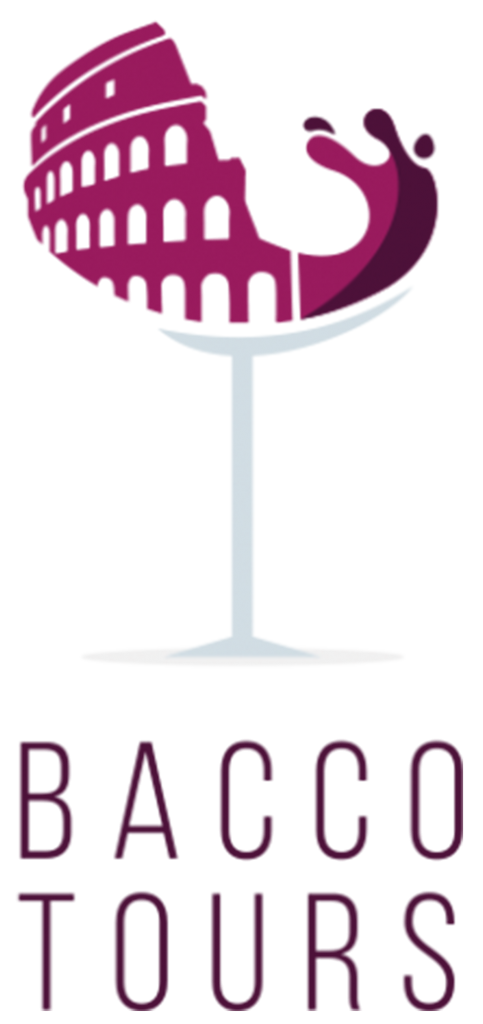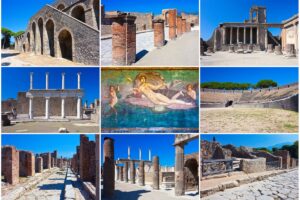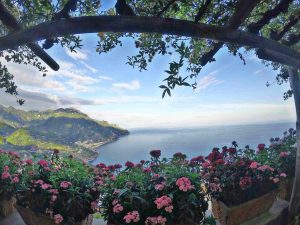TOP 10 POMPEII
2000 years ago Pompeii was a leisure city near the sea which welcomed Romans who wanted to enjoy nearby sea during summer. We can compare Pompei in a certain way with modern Las Vegas where you find all different kind of entertainment. Before the eruption you could find here spectacles, gladiatorial fights, theatrical performances, betting areas, thermal baths, pubs, brothels and a lot more.
Even if Pompeii is located 10 km from the Vesuvius, the city was completely covered by a thick layer of ashes and piroclastic materials after the big eruption of the volcano. While walking in Pompeii you can really understand the ancient romans daily life. It seems that the time has been frozen at the day of 24 October 79 A.D. It is said that Pompeii is the most lively among the dead cities.
Let’s discover together the Top 10 Pompeii Highlights and the must you should see when visiting one of the most important archeological areas in the world. A guided tour will make your visit alive in order to appreciate the best experience of Pompeii. On the other hand, if you explore the area on your own you loose the best part of it. It is just like walking through ancient stones and ruins.
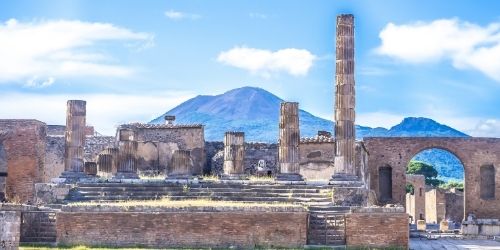
top 10 Pompeii highlights
THE ROMAN FORUM was the political, administrative and financial centre of Pompeii. Every Roman city had its central square decorated with beautiful and rich temples. In Pompeii we can find the temple dedicated to Juppiter, Juno and Minerva and the temple of Apollo decorated with the statues of Apollo and his sister Diana, Gods of hunting. The area of the Roman Forum is as large as the white house in Washington. On the long side we can see the ruins of the Basilica, which was the building dedicated to Finance and Justice.
LUPANARE: the brothels from Pompeii are about 25 and very famous. Imagine the state of shock the archeologists were in, when they found the erotical frescoes in the 18th century. The brothels of Pompeii had been covered for the public for about hundred years. In the 60s only Nord-Europeans could visit the brothels of Pompeii if they showed their passport, on the other hand visitors from Catholic countries were not allowed. One of the most famous brothel is the one of Africanus and Victor. The building has two levels, upstairs the bedrooms where the women were living and downstairs the service rooms where they were working. Very interesting are the erotic frescoes at the room entrance, which were used as a menu for the customers. There are also many graffitis left by the clients, many referring to “Novellia Primigenia”, apparently a very famous woman of that time.

THE ANFITHEATRE was the stadium dedicated to gladiatorial fights, which could accommodate about 20000 spectators. The access to the amphitheater was free of charge for all different classes of the society. The games were financiated by important politicians who wanted the favour of the people. The people went to the amphitheatre as modern supporters and hooligans, sometimes they also had fights. Very famous were the “derby” and the fights among Pompeian supporters and the Nocerinian supporters described by many ancient writers. In 1972 the Pink Floyd had a memorable concert here: Live at Pompei.
top 10 Pompeii highlights
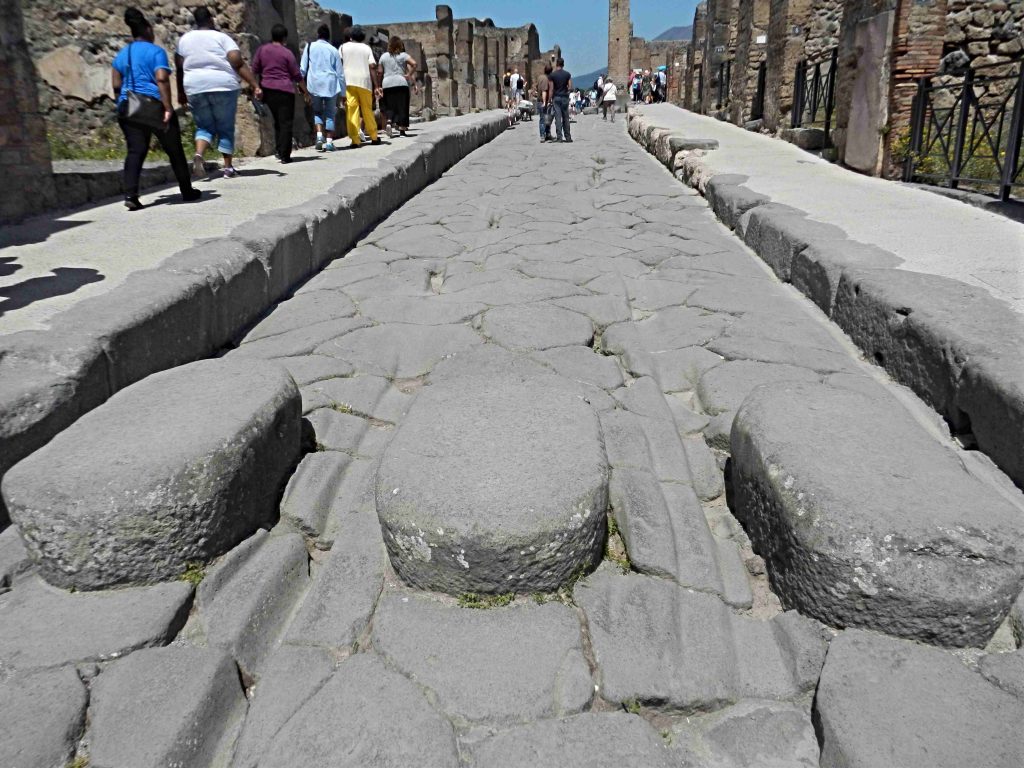
THERMOPOLIUM was the roman fast food where you could eat for example dried beans, cicory, soup, fruit. In some places you could find also sits where the clients were served by slaves, often exotic women. They drank wine, played dice and told funny stories. The favourite wine of the ancient romans was the Falerno del Massico.
THE THERMAL BATHS were very important for the health but also for an hygienical reason. The three most famous public thermal baths of Pompeii are the Terme Suburbane, the Terme Stabiane and the Terme del Foro. Very interesting are the mosaics decorating the different pools for example the pools with hot water (calidarium) and with cold water (frigidarium).
THE THEATRE could accommodate 5000 people and was built for the theatrical performances and the mimes. It has a greek inspiration and was built on the slopes of a little hill. There are two theatres, the smallest one was used for poetry and music competition.
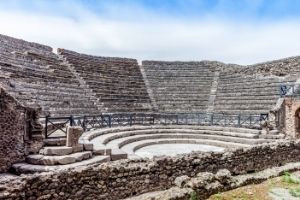
THE DOMUS are the private houses. In Pompei there are several houses with important decorations for example the Casa del Fauno, del Poeta Tragico, del Chirurgo and many houses which belonged to important Romans such as Casa di Cicerone and Casa di Sallustio. However many rich Romans had already moved away from Pompeii year 79 AD because they were scared about the many earthquakes. This is the case of the famous Villa dei Misteri, which was at the beginning a house dedicated to mysterious rituals and then used as a farm for food storage at the moment of the eruption. The frescoes found here are incredible for the richness of the red and yellow colors and absolutely worth a visit.
THE CASTS OF POMPEII were realized with the method invented by the archeologist Giuseppe Fiorelli which consisted of filling empty spaces with gips. When the archeologists found the ruins of Pompeii they had to excavate a thick layer of about 6 meters of dried ashes. When they were digging they found empty spaces left by the bodies buried during the eruption. Only the bones were left but the archeologists filled the empty spaces with gips. The bodies took their shapes remembering exactly the moment when they lost their life. Probably Pompeii is the only place in the world where dead people are on display after a big tragedy.
CAVE CANEM is one of the most interesting decorations from Pompeii. In fact it shows how close our modern culture is with the ancient roman culture. The warning sign at the entrance of our houses: beware of dogs was already used 2000 years ago.

top 10 Pompeii highlights
